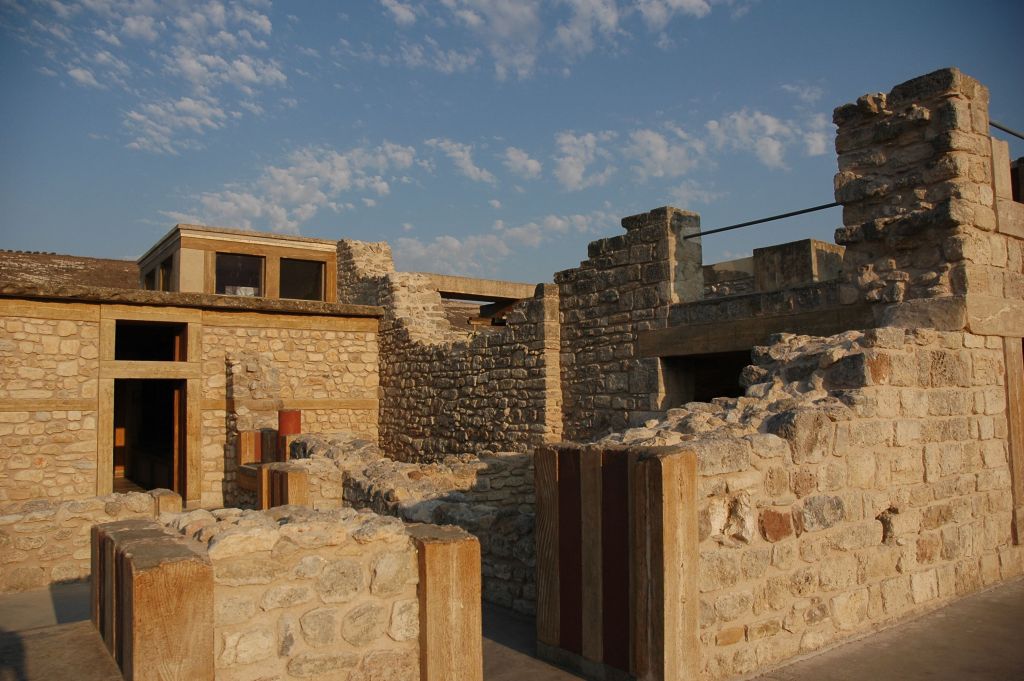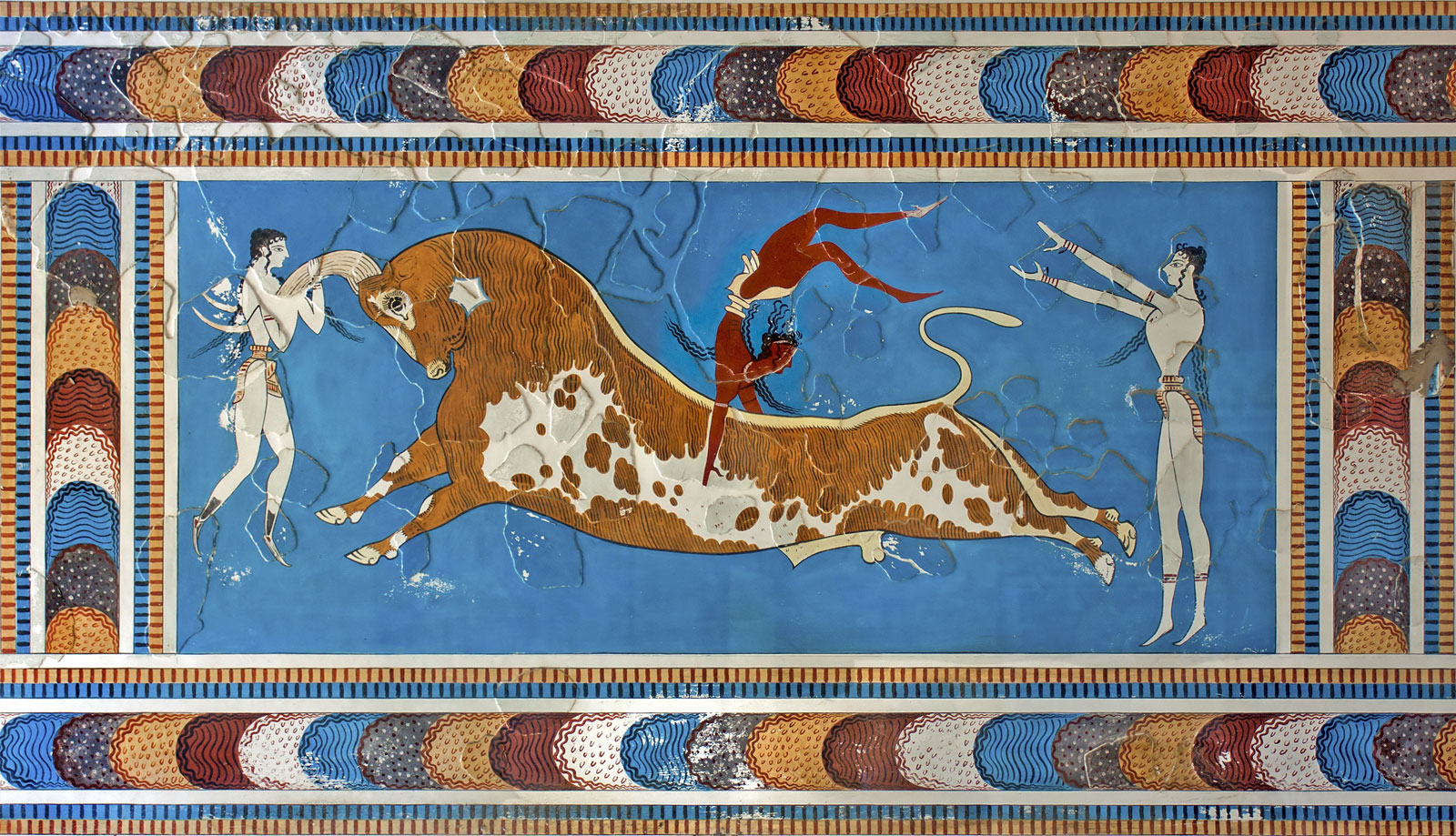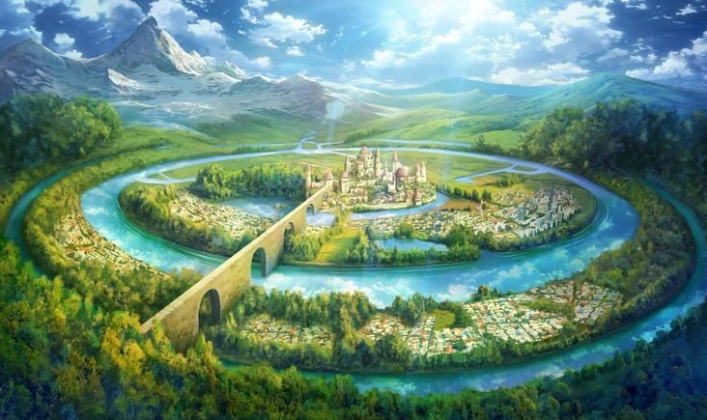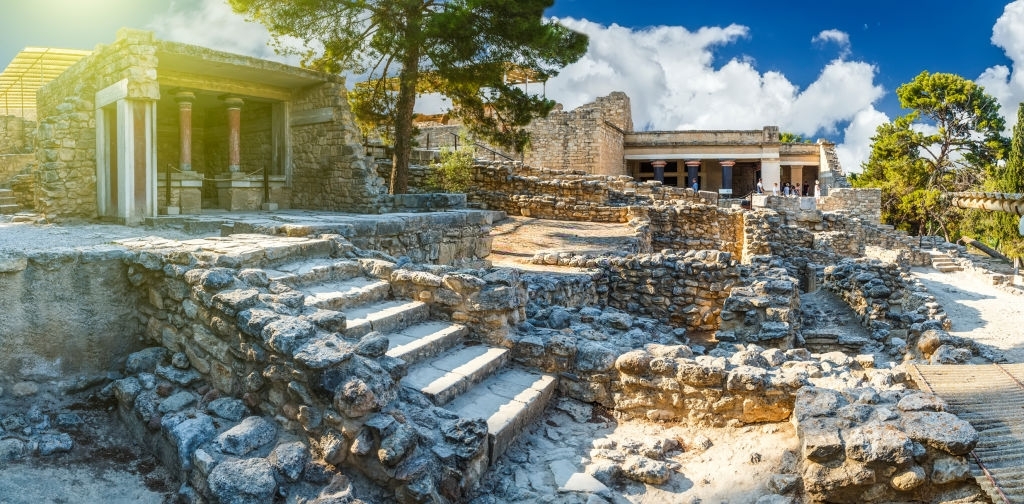By Konstantina Kerpinioti,
The Minoan civilization was named after the mythical king of Knossos, Minos, developed in Crete during the Bronze Age. The self-sufficiency of Crete in raw materials, variety of rocks, and minerals, in combination with its favorable geographical position, contributed to cultural development and prosperity. Cities with well-organized administration, monumental architecture, frescoes, and high-quality vessels have been identified throughout the island.
Archaeologist Arthur Evans was the first to actively address the possible presence of an ancient civilization in Crete. Excavating Knossos, from 1990 to 1905, Evans discovered extensive ruins that confirmed the reports of ancient sources, both written and mythological, about the existence of advanced civilization in Crete and the possible location of the legendary labyrinth and King Minos. It was Evans that coined the term “Minoan” from this legendary king of the Bronze Age.
Pre-Palace Period
The earliest manifestations of Minoan civilization date back to the early Minoan period (3000-2000 BC), when many new sites were inhabited throughout the island and local traditions began to be created in arts such as stonework, metalwork, seal carving, and black and white ceramics. From the middle of this period, some settlements began to expand significantly and acquire elements of an early urban organization, while the first monumental tombs were built and used by large families or entire communities. However, until the end of this period, there are no indications of a central administrative system and the various settlements seem to represent autonomous entities.

Old-Palace Period
In this period, and specifically around 2000-1900 BC, the first palaces are erected in Knossos, Phaistos, Malia, and Zakros. These monumental complexes reflect the existence of a strict social stratification and well-organized administrative structure, whose counterparts are known only from the modern empires of the Near East.
Contact with the great civilizations of the Near East and Egypt led not only to the adoption of specific methods of administrative organization, such as the use of stamps and writing for record-keeping (first with an ideological system and then with the syllabic Linear A), but also worship practices and new artistic trends, materials, and processing techniques. Over the next five centuries, large quantities of exotic raw materials and luxury items from Egypt, Syria, Mesopotamia, and the southern coasts of Asia Minor were introduced to Minoan palaces, which became centers of economic activity and artistic production.
Neo-Palace Period
Around 1700 BC, Minoan palaces were destroyed by earthquakes, but they were quickly rebuilt in an even more monumental way. This is the period of the greatest prosperity of the Minoan civilization. Contacts with the East are becoming closer.
In the hinterland of the island, large farmhouses (villas) are built which function rather as regional centers of collection of agricultural production and redistribution of goods.
During this period, Crete exerts a strong political and cultural influence throughout the Aegean. The Cycladic settlements of the 16th and 15th century BC have strong Minoan characteristics. The Mycenean Civilization, which is developing at the same time, adopts almost all the conquests of Minoan art.

Palaces
There were four palaces in Crete: Knossos, Phaistos, Malia and Zakros. In each of these locations, large and complex palace complexes appear to have functioned as local, administrative, commercial, religious, and possibly political centers. It is clear that the palaces controlled local communities mainly over the collection and storage of surplus goods-wine, oil, cereals, precious metals, and ceramics. There is agreement among historians that palaces were independent of each other until 1700 BC and then came under the influence of Knossos.
The absence of fortifications around the settlements indicates a relatively peaceful coexistence of the various communities. However, the presence of weapons such as swords, manuals, and arrowheads and defense equipment, such as armor and helmets, show that peace probably did not always prevail.
Destruction of the Minoan civilization and the myth of Atlantis
At the beginning of the 14th century BC, the palace of Knossos is finally destroyed. However, the Minoan Civilization as a complete system of social and economic organization, customs, and arts is permanently destroyed in 1100 BC.
Some scientists argue that the destruction of the Minoan Civilization and Ancient Thera is synonymous with the lost Atlantis. The mystery of Atlantis is perhaps the most talked-about myth. However, no one can prove that it existed and where exactly it was.
The first written references to Atlantis come from the Athenian philosopher Plato, who tells us that the Atlanteans were a people of supernatural abilities and divine descent, living peacefully on a fertile island beyond the Gates of Heraclites. In ancient times, the gates of Heraclites were the straits of Gibraltar, so it was probably located somewhere between Europe and Africa. However, new elements are coming to overturn the original theories.

So, what does Santorini has in common with the lost Atlantis? The description of Ancient Thira fits perfectly with Plato’s words about the mythical land of Atlantis. Ancient Thira was a perfect paradise on earth, that was destroyed around 1500 BC. When the gods divided the land, Poseidon took Atlantis and handed it over to his sons, the demigods, to cultivate it. One of them married Lefkipi with whom he had Cleito, whom Poseidon fell in love with and wanted to make her his own forever. Then, he chose a place to protect it with circular zones of fertile land and sea, in order to ensure a heavenly life. That is the reason why Atlantis was a small island shaped like a ring as Thira.
The name “Atlantis” probably comes from the mythical giant Atlantas, who held the whole earth and sky on its shoulders. Ancient Thira was rained by the sea all around just as Plato described the lost Atlantis. And this island is claimed to have disappeared from a large eruption that caused terrible earthquakes and smoke.
The myth of Atlantis has many unanswered questions and many mysterious elements at the same time. For this reason, we still do not know for sure if Atlantis ever even existed.
References
- Ο μύθος της Ατλαντίδας, geo.auth.gr, Available here
- Μινωικός & Μυκηναϊκός Πολιτισμός, cycladic.gr, Available here
- Μινωικός Πολιτισμός, worldhistory.org, Available here




